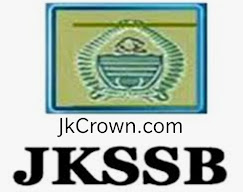JKSSB Class 4th Most Important 1000 Mcq Questions Free PDF Download JKSSB JK Crown
Writing Multiple-Choice Questions
Multiple choice items are a common way to measure student understanding and recall. Wisely constructed and utilized, multiple choice questions will make stronger and more accurate assessments.
At the end of this activity, you will be able to construct multiple choice test items and identify when to use them in your assessments.
Let's begin by thinking about the advantages and disadvantages of using multiple-choice questions. Knowing the advantages and disadvantages of using multiple choice questions will help you decide when to use them in your assessments.
Advantages
- Allow for assessment of a wide range of learning objectives
- Objective nature limits scoring bias
- Students can quickly respond to many items, permitting wide sampling and coverage of content
- Difficulty can be manipulated by adjusting similarity of distractors
- Efficient to administer and score
- Incorrect response patterns can be analyzed
- Less influenced by guessing than true-false
Disadvantages
- Limited feedback to correct errors in student understanding
- Tend to focus on low level learning objectives
- Results may be biased by reading ability or test-wiseness
- Development of good items is time consuming
- Measuring ability to organize and express ideas is not possible
Multiple choice items consist of a question or incomplete statement (called a stem) followed by 3 to 5 response options. The correct response is called the key while the incorrect response options are called distractors.
For example: This is the most common type of item used in assessments. It requires students to select one response from a short list of alternatives. (stem)
- True-false (distractor)
- Multiple choice (key)
- Short answer (distractor)
- Essay (distractor)
Following these tips will help you develop high quality multiple choice questions for your assessments.
Formatting Tips
- Use 3-5 responses in a vertical list under the stem.
- Put response options in a logical order (chronological, numerical), if there is one, to assist readability.
Writing Tips
- Use clear, precise, simple language so that wording doesn’t effect students’ demonstration of what they know (avoid humor, jargon, cliché).
- Each question should represent a complete thought and be written as a coherent sentence.
- Avoid absolute or vague terminology (all, none, never, always, usually, sometimes).
- Avoid using negatives; if required, highlight them.
- Assure there is only one interpretation of meaning and one correct or best response.
- Stem should be written so that students would be able to answer the question without looking at the responses.
- All responses should be written clearly, approximately homogeneous in content, length and grammar.
- Make distractors plausible and equally attractive for students who do not know the material.
- Ensure stems and responses are independent; don’t supply or clue the answer in a distractor or another question.
- Avoid “all of the above” or “none of the above” when possible, and especially if asking for the best answer.
- Include the bulk of the content in the stem, not in the responses.









